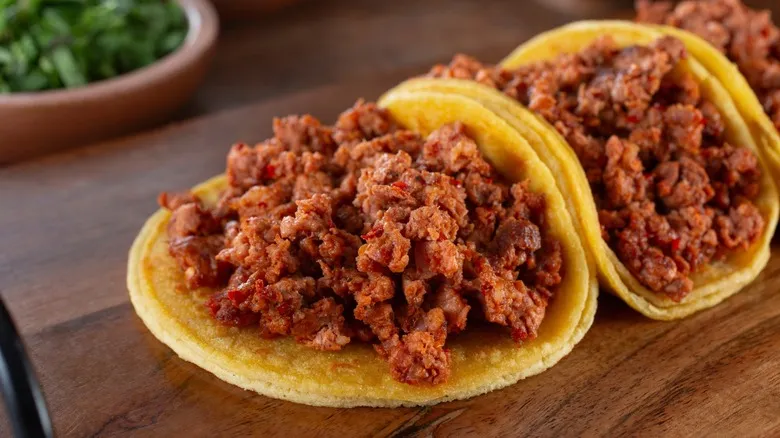Spanish and Mexican chorizo are two totally different types of sausage

While you can easily distinguish between Spanish and Mexican chorizo by their key characteristics, there are additional ways these two types of chorizo differ. Both are primarily made from pork, but you might find it reasonable to consider Mexican and Spanish chorizo as entirely different varieties of sausage.
Traditional Spanish chorizo is flavored with garlic, herbs, white wine, and smoked Spanish paprika, which is derived from pimento peppers and also serves as an excellent seasoning for burgers. This aromatic, savory, and spicy combination complements the smoky essence of Spanish chorizo, achieved through its curing and smoking process. Being a drier and fully cooked sausage, Spanish chorizo is a common feature in tapas-style dishes, where it can be sliced and enjoyed with other appetizers.
In contrast, Mexican chorizo typically incorporates chili peppers along with various herbs and spices for a spicier flavor profile. It contains both pork fat and ground meat, and often includes vinegar or another acidic ingredient, resulting in a taste that is quite different from its Spanish counterpart. Although Mexican chorizo can be aged, it remains unsafe to eat raw and must be thoroughly cooked before consumption. Therefore, crumbled hot Mexican chorizo is best suited as a meat filling in larger dishes like tacos or huevos rancheros, rather than in tapas.
Recommended

What Exactly Does Goat Milk Taste Like?

The Reason So Many Restaurants Use Brick Ovens For Pizza

The Scientific Concept That Helped Alton Brown Become A Better Cook

11 Genius Lemon Hacks To Naturally Clean Your Kitchen
Next up

